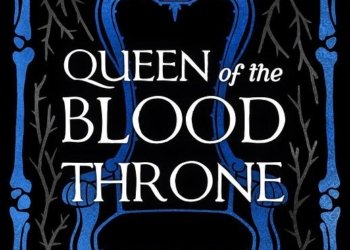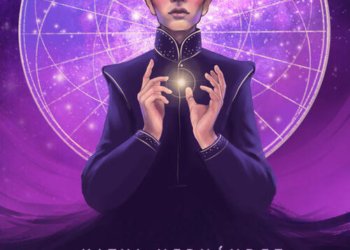No products in the cart.
The Sword of Kaigen by M L Wang
“Wholeness, she had learned, was not the absence of pain but the ability to hold it.”
The Sword of Kaigen by M.L. Wang is an unexpectedly surprising book. Although it originally seems to be taking place in a culture in nineteenth-century east Asia, the first chapter makes references to video games, holographic images from cell phones, and wireless internet. Despite not being the focus of the narrative, technology is present and has a significant but supporting role. While reading the first half of the book, the reader is lead to expect that this will be an action-packed, high fantasy epic with mounting conflicts, retribution, and heroes emerging from the ashes. However, there are still more surprises in store. That is not the situation. There is an early foreshadowed large-scale conflict, but it swiftly turns into an engaging series of character studies centred on a damaged family fighting for survival. The second half of the book focuses on this family’s quest for self-awareness as they deal with tragedy, a troubled history, and an uncertain future.
Other issues that are pertinent to today’s culture include how propaganda and state-run news are utilised to sway public opinion while hiding the truth about what is actually happening in the outside world. Kwang, an outsider who has access to cutting-edge technology and is aware of official propaganda but has little actual knowledge of the quiet, hidden culture the narrative is set in, acts as a stand-in for the reader.
The book has a significant learning curve because the author doesn’t explain all of the unfamiliar phrases that are part of Kaigen and its neighbouring cultures. There is a glossary available for individuals who want to comprehend everything—I include myself in this category—but it is also feasible to understand something by looking at the context. I do suggest spending some extra time studying the glossary because it gives a solid explanation of why certain events take place the way they do. To get the most out of the novel, Wang requires the reader to put up a little extra effort, and if you do, it seems like an accomplishment after you are aware of the slang terms for particular families, the numerous types of elemental energies, the religious practises, and many other subtleties. All of this results in an universe that is rich, deep, and fully realised and is enjoyable to explore.
But there were some passages that were agonising to read. One particularly horrific and well-written chapter, “The Shelter,” made me feel as though I was going through the same horrors as the protagonists. One of Wang’s writing strengths is her ability to draw the reader into the characters’ horrific experiences as they are forced to deal with traumas and achingly raw disclosures. Wang displays incredible fortitude in creating these detailed descriptions from such trying emotional circumstances, and this is admirable. When a writer like Wang voluntarily offers to sympathise with such challenging mindsets and renders these experiences in text, it is always striking.
How realistically it handles the character arcs of its cast is another topic that raised this tale. For twenty-six chapters, I could not bear one particularly annoying character, but by chapter twenty-seven, I had somehow come to sympathise with them. There is a redemption arc, but it isn’t something that is crammed into a few pages with all the morals figured out and neatly tied off. Instead, Wang assures the reader that these characters’ paths to salvation have only just begun and that they won’t instantly improve. These people still have a long way to go, and it is obvious. I found it to be a remarkable and realistic portrayal of character development.
This plot has a lot to recommend it, including a tonne of creative action sequences with elemental powers and amazing swordfights. Even more stunning is the emphasis on how these violent acts affect individuals who are ill-prepared to learn the lessons they impart. The narrative is heavily influenced by the themes of memory, devotion, bravery, and what it means to be married and a parent. The Sword of Kaigen combines heart-pounding action with an in-depth study and investigation of the human condition, giving the impression that it is multiple books in one. Although Wang has authored other Theonite stories, this is the first high fantasy novel for adults set in this imaginative universe. I hope it won’t be the final.
The Review
The Sword of Kaigen
9.5 Score
This book won the Self-Published Fantasy Blog-Off’s fifth year and it’s easy to see why it’s so well-loved. This is a unique story with nuanced layers as it describes the time before an attack, the attack itself, and then the aftermath. It takes place in an insular community with a traditional way of life to preserve their ancient style of magic so they don’t know much about the outside world.
PROS
- Oh. My. Gods! Holy slow-burn epicness!
- Everything You Could Want in a Story.
- Beautifully told, emotional story.
- Superb martial-arts fantasy story.
CONS
- Terrible beginning.
- Wet fantasy of a weeb.
- Abuse, depression, death, sad ending.
- Characters are very boring.











